Effective Social Media Marketing Strategies for Success

Effective social media marketing strategies align clear objectives, audience insights, platform selection, content pillars, and analytics to drive measurable growth and engagement. This guide maps foundational goal setting, audience research, platform choice, content planning, and performance optimization—each step reinforced by proven digital marketing services designed to elevate your campaigns. Whether you seek to boost brand awareness, generate qualified leads, or foster community loyalty, the following sections deliver actionable frameworks. Alongside strategic best practices, our comprehensive digital marketing services integrate seamlessly at every stage to ensure consistent, data-driven results.
What Are the Key Goals for Effective Social Media Marketing?
Key goals in social media marketing define outcomes that guide strategy—brand awareness expands reach through targeted engagement, lead generation converts interest into prospects, and customer retention fosters ongoing loyalty for sustained revenue.
How Do You Set SMART Social Media Marketing Goals?
Setting SMART social media marketing goals involves creating objectives that are specific, measurable, achievable, relevant, and time-bound, ensuring each campaign aligns with overarching business outcomes.
- Specific: Define a precise outcome such as “increase Instagram followers by 15 percent in Q3."
- Measurable: Assign quantifiable metrics like engagement rate or conversions per post.
- Achievable: Align targets with past performance and resource capacity.
- Relevant: Focus on goals that support broader brand or sales objectives.
- Time-bound: Establish clear deadlines, for example, “generate 100 leads within 60 days."
Clear SMART goals provide a structured roadmap that transitions naturally into selecting appropriate metrics for performance tracking.
SMART Goals in Marketing
Setting SMART goals is crucial for effective social media marketing. These goals should be Specific, Measurable, Achievable, Relevant, and Time-bound to ensure campaigns align with overall business objectives and provide a structured roadmap for success.
Which Metrics Define Success in Social Media Campaigns?
Success in social media campaigns is measured by key performance indicators such as engagement rate, click-through rate, conversion rate, audience growth, and return on ad spend to quantify impact and optimize strategies.
- Engagement Rate: Likes, comments, shares divided by total impressions.
- Click-Through Rate (CTR): Link clicks divided by impressions.
- Conversion Rate: Desired actions (form submits, sign-ups) divided by clicks.
- Follower Growth: Net new followers over a defined period.
- Return on Ad Spend (ROAS): Revenue generated per dollar spent on advertising.
Tracking these metrics reveals performance trends and informs iterative improvements for goal achievement.
How Can Goal Setting Drive Brand Awareness and Lead Generation?
Strategic goal setting channels social media efforts toward brand awareness by increasing impressions and followers, and drives lead generation through targeted call-to-action integration within posts. For example, a campaign objective to “boost website visits by 20 percent” couples content themes with direct links and promotional offers, converting engaged audiences into prospects. This alignment ensures each post purposefully advances both visibility and pipeline growth.
How Do You Identify and Understand Your Target Audience for Social Media?
What Methods Are Best for Social Media Audience Research?

Effective audience research uses surveys, social listening tools, analytics insights, and competitive benchmarks to gather demographic, behavioral, and psychographic data.
- Surveys and Polls: Directly capture interests and pain points.
- Social Listening: Monitor brand mentions and trending topics.
- Platform Analytics: Review age, location, and device usage reports.
- Competitive Analysis: Benchmark against peer content performance.
These methods converge to form a data-driven understanding that guides persona development and content alignment.
How Do You Create Effective Audience Personas for Social Media Marketing?
- Compile Demographic Data: Age range, gender, location.
- Map Psychographics: Values, motivations, pain points.
- Identify Preferred Channels: Networks where engagement peaks.
- Define Content Preferences: Video, imagery, text, or infographics.
With personas established, content teams can craft messages that authentically address audience needs and channel behaviors.
Why Is Audience Understanding Crucial for Platform and Content Selection?
Deep audience understanding informs platform choice by matching user behaviors with network strengths and shapes content formats that appeal to specific segments. Recognizing that Gen Z may favor short-form video on TikTok while B2B executives engage on LinkedIn ensures resource allocation aligns with user habits for maximum impact.
Which Social Media Platforms Should You Choose for Your Marketing Strategy?
What Are the Strengths of Major Platforms Like Facebook, Instagram, TikTok, LinkedIn, and X?
Below is a comparison of leading platforms, their core strengths, and ideal use cases.
| Platform | Strength | Ideal Use Case |
|---|---|---|
| Broad demographic reach and robust ad tools | Community engagement and ads | |
| Visual storytelling and influencer impact | Brand aesthetics and e-commerce | |
| TikTok | Viral short-form video and trend amplification | Youth engagement and awareness |
| Professional networking and thought leadership | B2B lead generation and webinars | |
| X | Real-time conversations and news sharing | Public relations and live updates |
How Do You Match Platforms to Your Target Audience and Goals?
Matching platforms involves aligning audience personas with platform demographics—Facebook excels at broad reach for brand awareness, LinkedIn suits B2B thought leadership, and TikTok drives viral engagement for younger segments. Prioritize networks where your personas are most active and where your objectives—such as lead capture or community building—can be directly supported through native features.
What Are Emerging Platform Trends to Consider in 2025?
- Social Commerce: In-app storefronts streamline purchasing.
- AI Personalization: Automated content recommendations boost relevance.
- Ephemeral Content: Stories and fleeting posts drive immediacy.
- AR Filters: Interactive visual layers increase brand interactivity.
Staying ahead of these trends future-proofs strategies and sustains audience interest.
How Do You Develop a Compelling Social Media Content Strategy?
What Are the Essential Content Pillars and Formats for Social Media?

A compelling content strategy organizes themes and formats into consistent, audience-centric pillars to build engagement and support marketing objectives.
- Educational: How-to guides and expert insights.
- Entertaining: Behind-the-scenes and interactive challenges.
- Promotional: Product highlights and offers.
Balancing these pillars across formats maintains audience interest and drives desired actions.
How Can You Plan and Maintain an Effective Social Media Content Calendar?
Maintaining a social media content calendar involves scheduling posts by theme, frequency, and platform using editorial tools to ensure consistent publishing and resource allocation.
- Define Themes by Week or Month: Assign pillars to dates.
- Set Publishing Cadence: Establish optimal posting frequency per network.
- Use Scheduling Tools: Automate publishing with reminders.
- Review and Adjust: Incorporate performance insights for real-time edits.
A disciplined calendar underpins reliable content flow and team accountability.
What Strategies Drive Organic Engagement and Community Building?
Organic engagement strategies leverage interactive content, user-generated initiatives, and timely responses to build an active online community that fosters brand loyalty.
- Interactive Polls and Quizzes: Encourage participation.
- User-Generated Campaigns: Feature customer stories and testimonials.
- Prompt Response Protocols: Answer comments and messages within 24 hours.
- Themed Community Events: Host live Q&As or virtual meetups.
These tactics deepen connections and transform followers into brand advocates.
How Do You Measure, Optimize, and Future-Proof Your Social Media Marketing Strategy?
What Key Analytics and Metrics Prove Social Media ROI?
Key analytics for proving social media ROI include cost per acquisition, conversion rate, customer lifetime value, engagement-to-reach ratio, and return on ad spend.
- Cost per Acquisition (CPA): Total ad spend divided by new customers.
- Engagement-to-Reach Ratio: Interactions relative to audience size.
- Customer Lifetime Value (CLV): Predicted revenue per customer.
- Return on Ad Spend (ROAS): Revenue generated per advertising dollar.
- Conversion Rate: Actions taken divided by total clicks.
Social Media Metrics and ROI
Key performance indicators (KPIs) such as engagement rate, click-through rate, conversion rate, and return on ad spend (ROAS) are essential for measuring the success of social media campaigns. Tracking these metrics allows for optimization and demonstrates the value of social media investments.
How Do You Conduct a Comprehensive Social Media Audit?
- Inventory Accounts: List active profiles and administrators.
- Review Analytics: Compare performance vs. benchmarks.
- Assess Content Themes: Identify top and underperforming formats.
- Analyze Audience Growth: Examine follower demographics and engagement.
- Benchmark Competitors: Note gaps and differentiators.
Regular audits ensure strategies remain aligned with evolving objectives and market conditions.
What Emerging Trends Should Marketers Adapt to in Social Media?
- AI-Generated Creatives: Leverage generative tools for rapid content ideation.
- Live Shopping: Host real-time product showcases with direct checkout.
- Ephemeral Messaging: Utilize stories and fleeting posts to convey urgency.
- Privacy-First Advertising: Implement consent-based targeting and transparent data use.
The journey from goal definition through measurement establishes a cycle of continual refinement that secures sustained social media success.
By weaving audience research, platform insights, content pillars, and analytics into a unified plan—and leveraging expert digital marketing services—you position your brand to thrive in an ever-evolving landscape. Embracing these strategies ensures not only immediate performance gains but also a future-proof foundation for long-term growth and community trust.


















